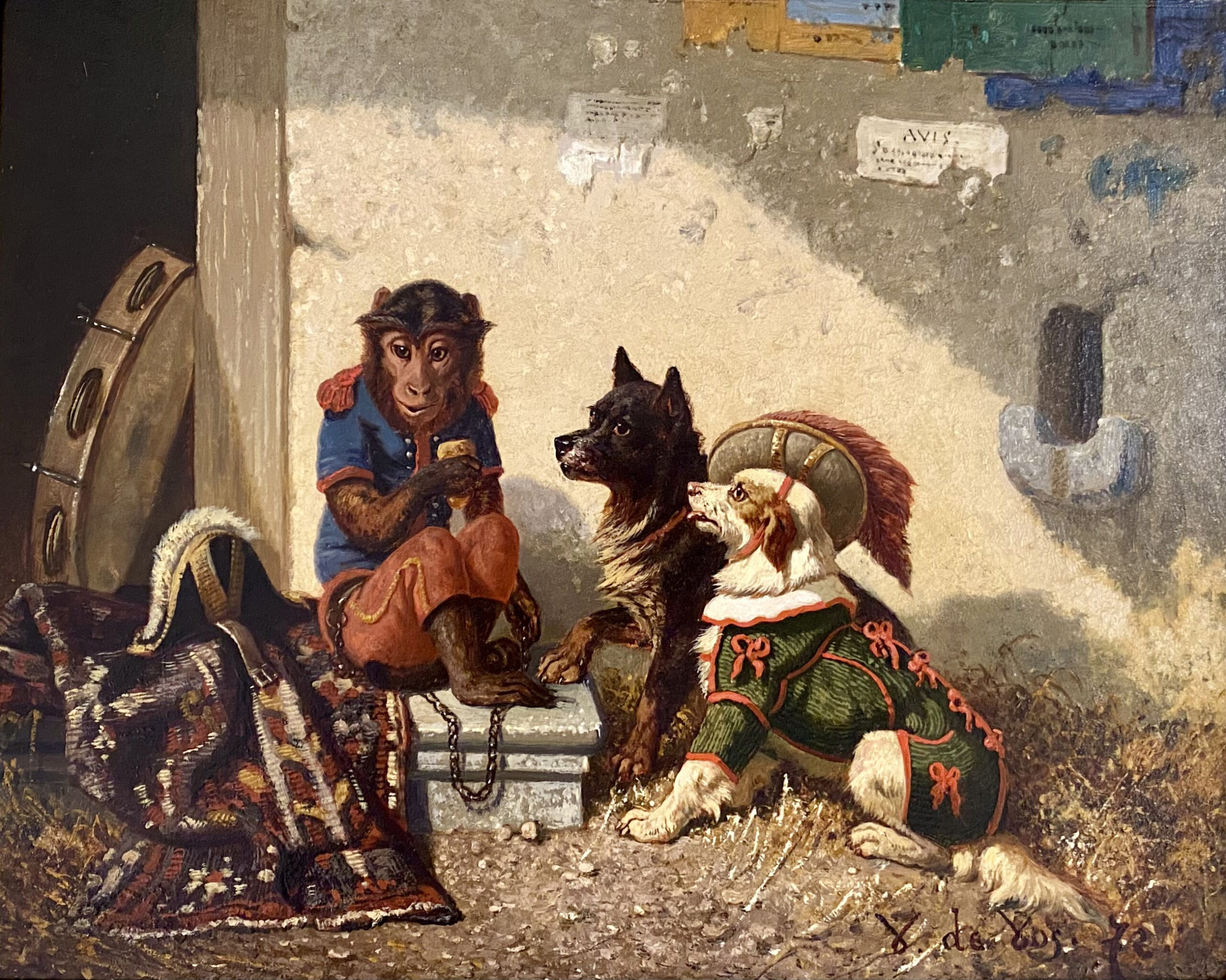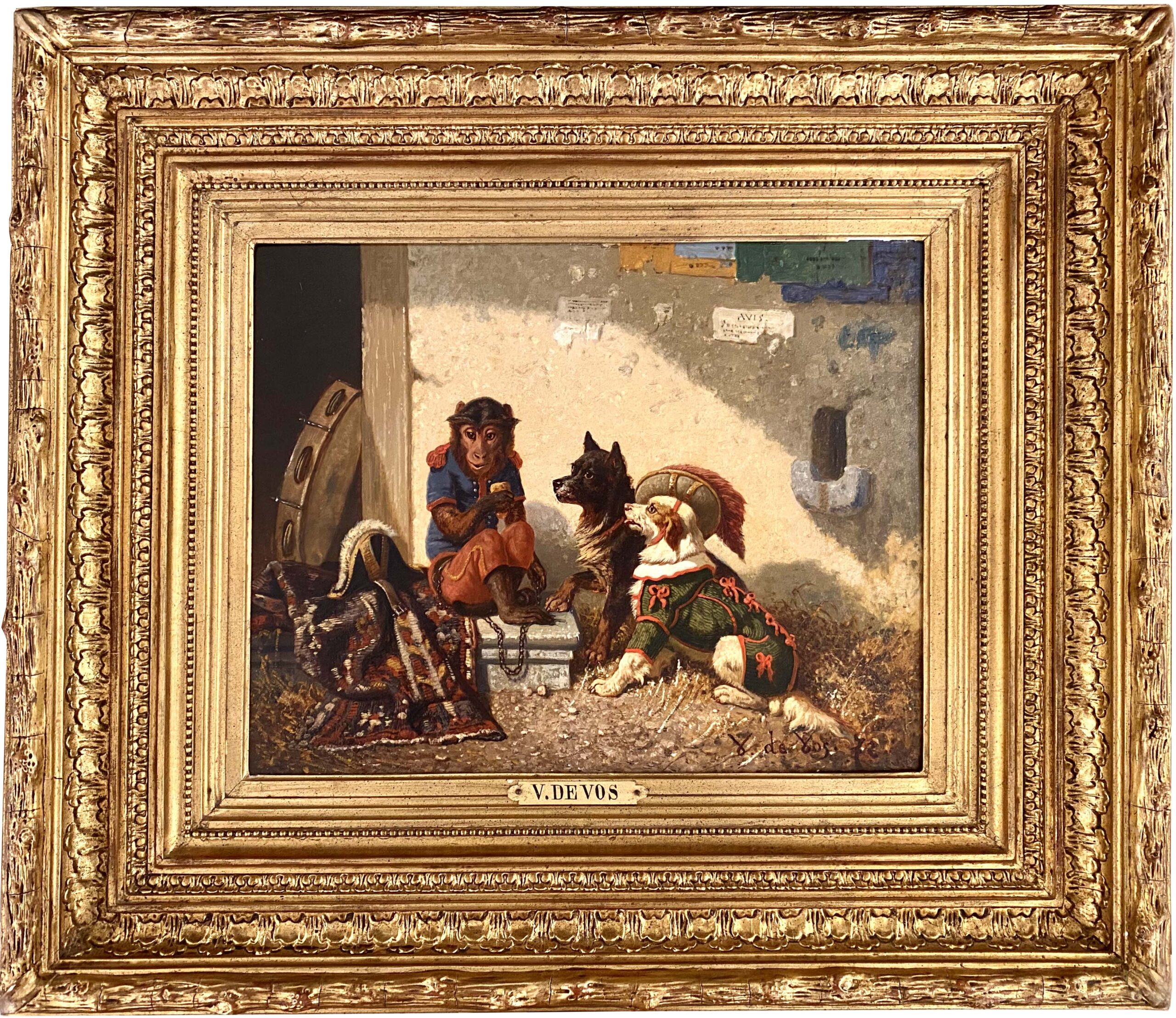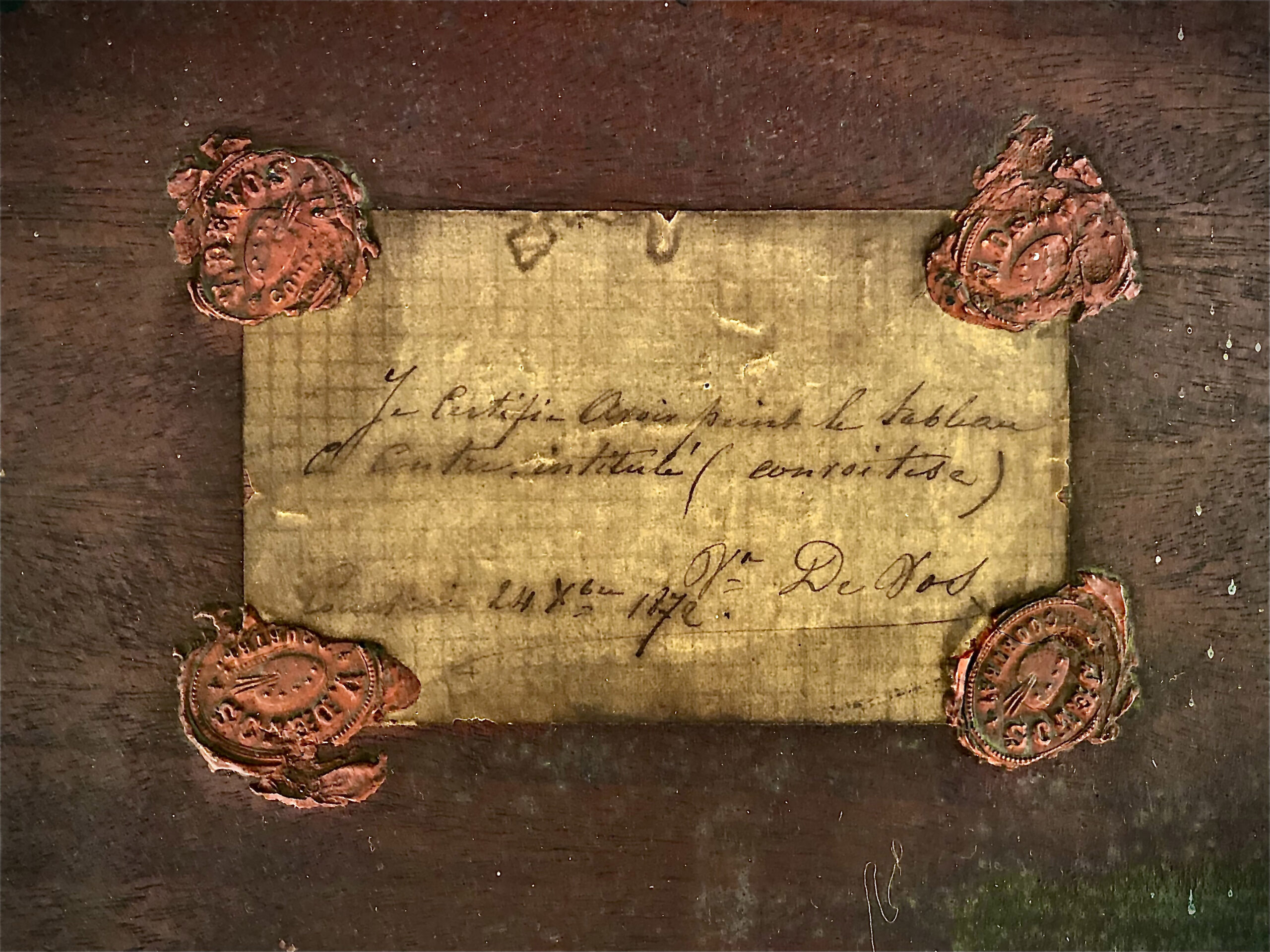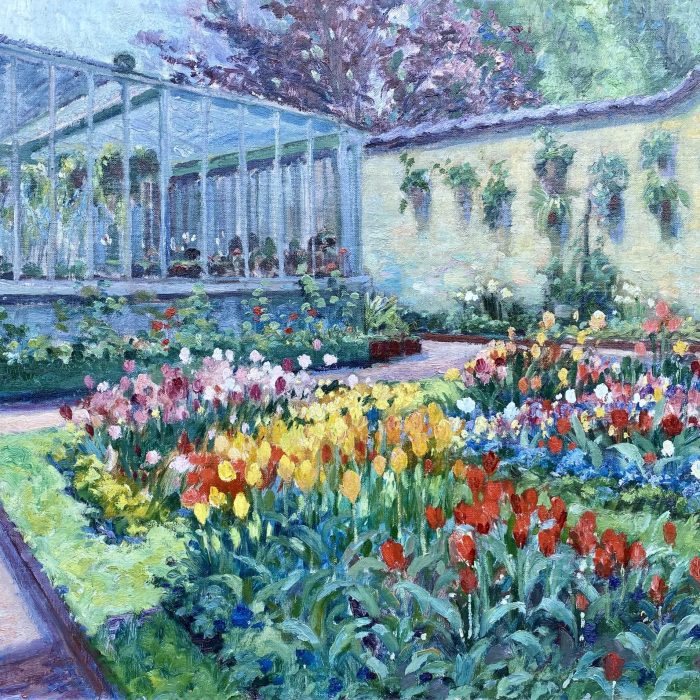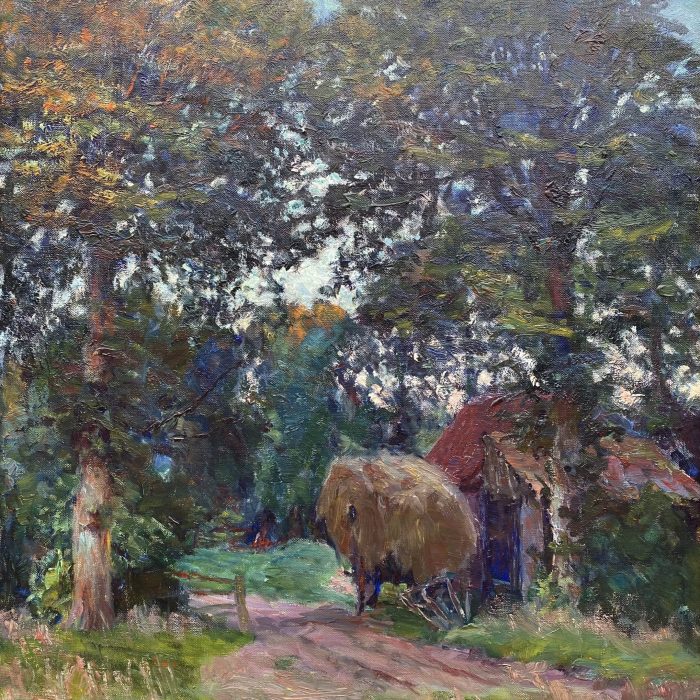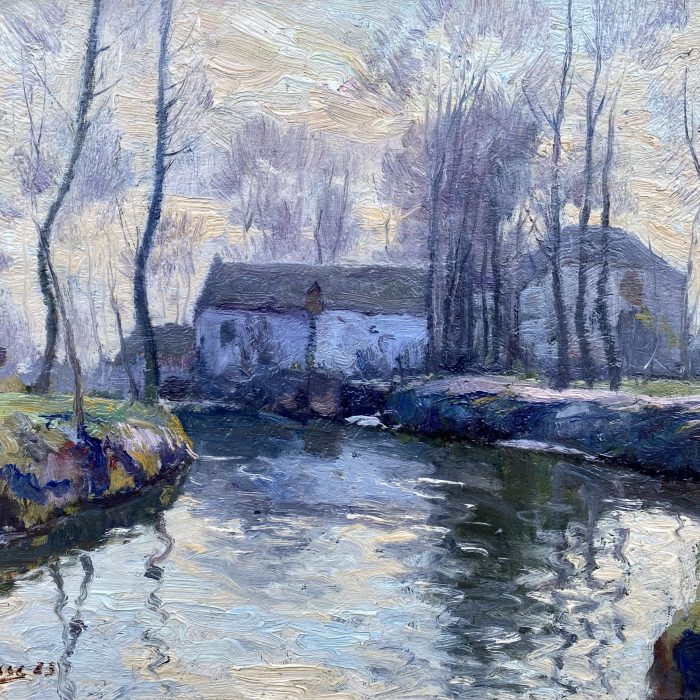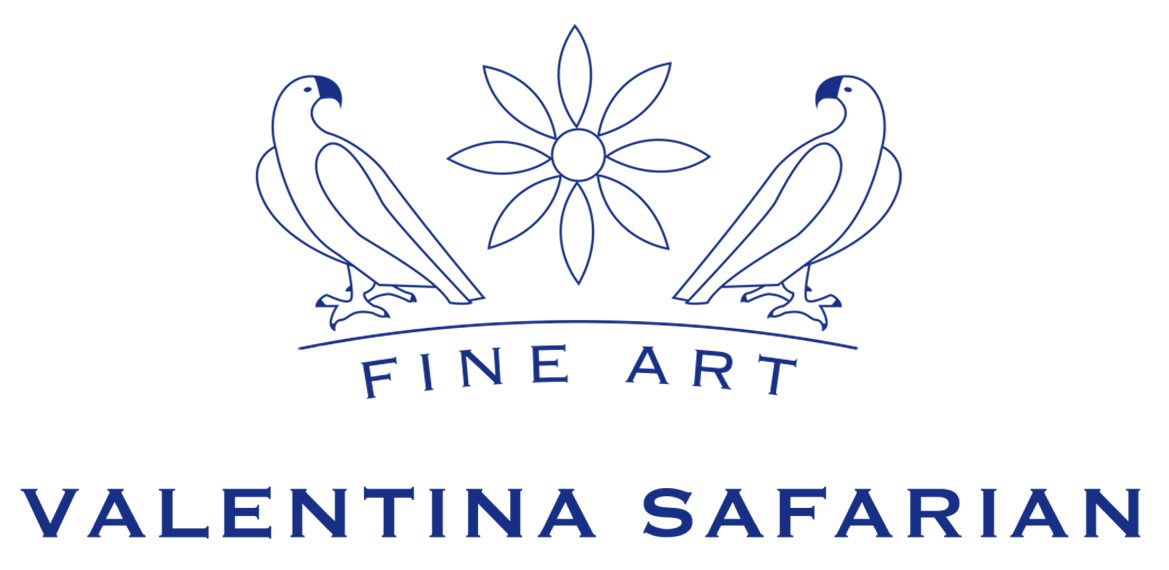1829 – Kortrijk – 1875
Belgian Painter
Friends of the Circus
Vincent de Vos, also known as Joost Vincent de Vos, was a Belgian painter celebrated for his vivid and often humorous depictions of animals—particularly monkeys, dogs, and cats. Born in 1829 in the Flemish town of Kortrijk, he was the son of miller Jan Eugene Vos and Marie Anne Verhaeghe. He developed his artistic talents at the Academy of Kortrijk under Filip De Witte, and further refined his focus on animal painting through the mentorship of Edward Woutermaertens.
De Vos distinguished himself early in his studies, earning several medals between 1848 and 1852 for composition, anatomy, drawing from antique sculpture, and perspective. His deep understanding of anatomy and character is evident in the psychological nuance of his animal portraits, often laced with gentle satire and charm.
He became especially known for his singeries—paintings in which monkeys imitate human behavior, often dressed in costume and placed in whimsical or theatrical settings. Inspired by 18th-century traditions and popular in 19th-century Belgium, these works offered lighthearted critiques of human nature and social mores. Alongside contemporaries such as Emmanuel and Zacharie Noterman, De Vos emerged as one of the leading Belgian artists in this genre.
He also frequently painted dogs, portraying them in naturalistic hunting scenes or imaginative, narrative-rich compositions set in salons, circuses, or urban street life. His remarkable ability to capture the personality of his subjects—whether noble, playful, or roguish—gave his work a unique vitality and wit.
In 1870, De Vos traveled to Italy and spent time painting in the Roman Campagna. Upon his return to Kortrijk, he set up his studio and kept a private menagerie that included dogs, monkeys, wolves, foxes, and even a camel—many of which served as live models for his compositions.
His small-format paintings, often cleverly signed or dated within the scene—on posters, crates, or other painted surfaces—were commercially successful and exhibited primarily in Belgium and France. Today, his works can be found in public collections including the museums of Bruges, Kortrijk, Doornik (Tournai), Lille, and Mulhouse.
Vincent de Vos died in his hometown of Kortrijk on 5 October 1875. He left behind a body of work that continues to charm viewers with its humor, empathy, and technical finesse.
Literature: Benezit, Arto, Piron, Flippo, Fierens, Vollmer, Bussche, Meyer, Berko.

